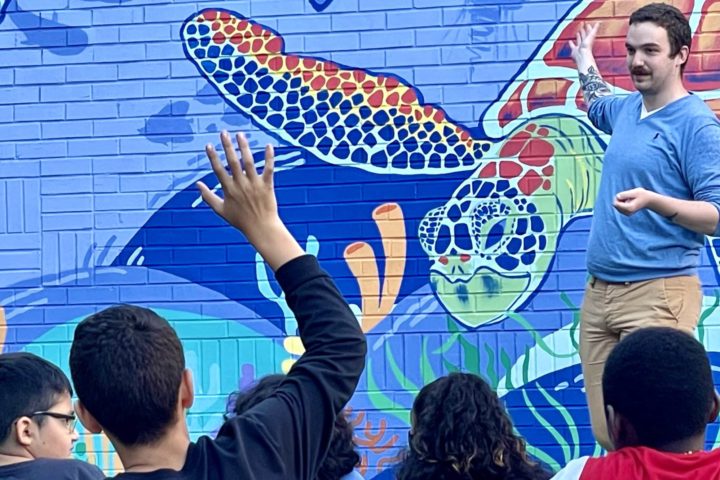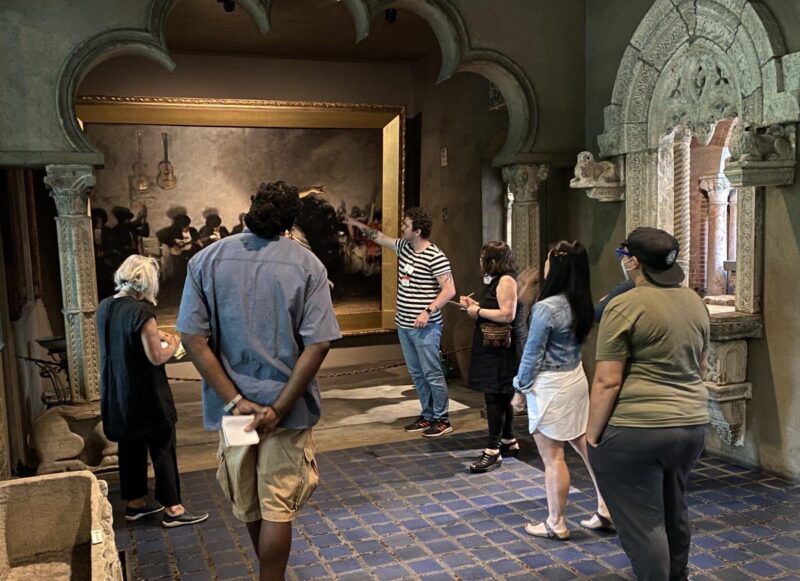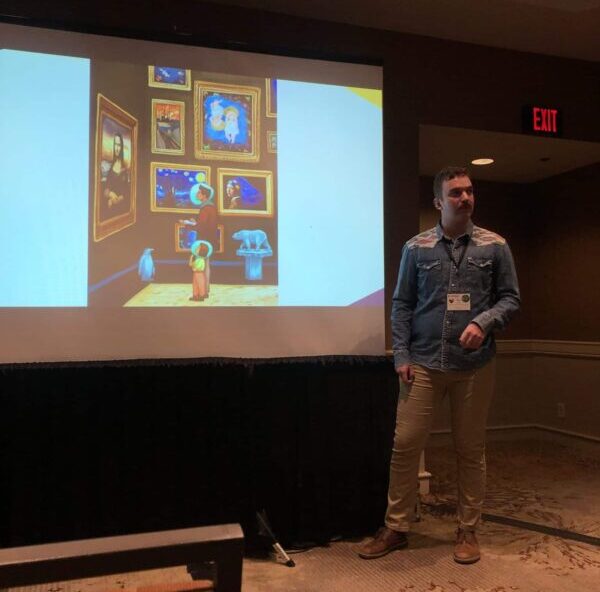
How a ‘Science Person’ Found a Love for Art
October 26, 2022By Eric Carstens, Bow Seat’s Program Manager
I have a confession… I am not an art person.
Let me rephrase that: I stopped taking art classes after elementary school, don’t have a good grasp of color theory, nor do I know the difference between Modernism and Postmodernism. I have always considered myself a science person. My lifelong love of the ocean and background in marine science brought me to Bow Seat – not an intimate knowledge of art.
In graduate school, I dipped my toes into the art world after participating in Visual Thinking Strategies (VTS). For those who have never experienced it, VTS is a participant-driven method of observing and discussing art. Rather than an educator droning on about the technique or the artist’s life history, a facilitator gives you time to look at the piece and then simply asks, “What is going on in this picture?”
After absorbing the piece, participants are asked to make observations and then provide concrete evidence to back them up. The facilitator then prompts, “What more can we find?”, opening up the floor for others to agree, disagree, or make a totally new comment. There are no right or wrong answers in VTS. Your interpretation of the art is just as valid as your neighbor’s – as long as you can justify it with visual evidence.
VTS opened my eyes. It does not take an encyclopedic knowledge of an artist or a movement to appreciate art. Understanding an artist’s intent is not more important than finding my own meaning. If I enjoy looking at art, then I am an art person.

Thinking Through Art at the Isabella Stewart Gardner Museum
In August, I had the opportunity to participate in Thinking Through Art at the Isabella Stewart Gardner Museum in Boston. Thinking Through Art is a week-long intensive training in facilitating Visual Thinking Strategies for Boston Public School teachers (and lucky Program Managers). Every morning, we ventured into the palatial galleries, jam-packed with art, to practice VTS. It was both energizing and challenging. I thought deeply about pieces that I probably would not have glanced at for more than 10 seconds otherwise.
When you allow yourself time to pause and reflect on ‘what is going on in this picture,’ it becomes clear that art is an incredible medium for telling stories. That is what makes it such a powerful tool for advocacy. Take a scroll through our Gallery and see firsthand how art can evoke emotion and transcend language. It starts conversations and allows for multiple interpretations. A powerful piece of art is hard to forget, and you do not need to be an “art person” to get it.
When we ask students to create art for the environment, we ask them to share a story with us. To share something that we can connect to our lives, find inspiration, or learn something new. VTS provides the framework to unpack those stories by forcing you to slow down and think about what resonates with you.

VTS session at the 2022 NAAEE Conference
At Bow Seat, we have incorporated VTS lessons into our workshops and programs. We have seen how the same piece of art can spark fruitful conversations with fifth-graders, twelfth-graders, and educators. If you are an educator planning to bring the Ocean Awareness Contest to your classroom, we are excited to offer information sessions and VTS lessons, no matter where you are. If you are interested, please sign-up on the Educator Resources page.
The Ocean Awareness Contest is not only for accomplished artists, writers, filmmakers, or performers. It is an invitation for you to harness your creativity and unique perspective to advocate for the oceans, no matter where you are on your artistic journey. We all have stories to tell, and we hope you will share yours.
